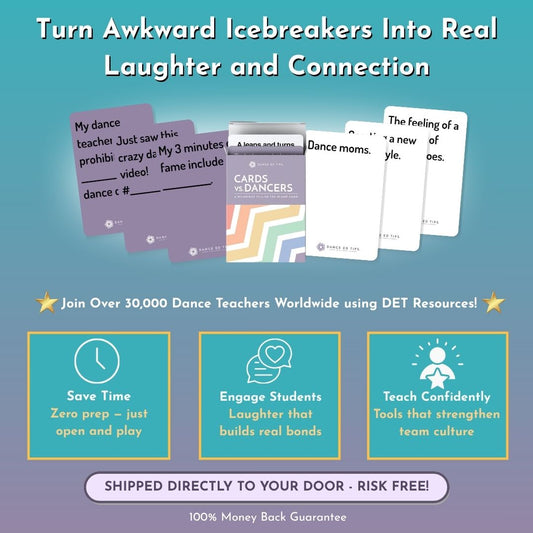By: John Barrella
With new trends and dances Hip Hop has become more popular than ever but it is important to remember its roots. Learn how to go back to the basics here
- Know Your Roots!
Learn your history and gain an understanding of the environment it was developed in. Not only is this a no brainer when it comes to all genres...but learning the roots of street dance will help you differentiate between the stuff we do in the studio that's actually coming from hip hop vs somewhere else. The relationship between hip hop and the social atmosphere can be misleading. Although hip hop did develop through the social environment at the time of it's creation, our current social atmosphere isn't necessarily the same structure as one that would create hip hop. As young people socialize more frequently through social media and video games, the quality of new movement has taken a hit. A quick study of the world of street dancers will quickly remind your dancers that the culture grew with connection to music, battles, and reputationin mind. Knowing how this style of dance became a movement of empowerment can help keep dancers in a growth mindset. For street dancers, you show up at the next gig with something new, not something familiar. As an added bonus, knowledge of dance history will make us all more aware of when choreography strays too far from what could truly be defined as hip hop.
- Self Expression is Key
Speaking of the social atmosphere, the roots of hip hop demand that you stand out, not blend in. In this day and age of “familiar excites the audience”, I urge all teachers to put a heavier focus on new content. While it feels like an easy sell to feature fortnite dances, the dab, and other moves in your class, this makes it more difficult to sell individuality. We want our dancers to develop new skills, helping us set the standard that hip hop class is a place to learn. When kids come to class expecting familiar music and moves, they feel they are the authority. The obvious problem is that you are the authority. Maintain your authority by giving a class that takes them somewhere new. Once you have given the information, there should come a time where you push for character and freestyle (improvisation) in your classroom. The number one goal I have when training teachers is to help them find a way to fuse together the classic structured dance class kids expect in other genres with authentic hip hop. The most important aspect of hip hop, that should remain intact, is the ability to freestyle and think with the music. The very idea of breaking free from choreography and still knowing what to do while the music is playing could be considered an element of hip hop. Freestyle is exactly how this art form started and should never disappear in upcoming dancers. Giving them new music, techniques, real terms, and dance history all play a major role in their ability to think beyond your work.
- Patience & Investment
The enemy of hip hop is conformity and lack of work ethic. Unfortunately, many young people fall into this trap due to the world we now live in. To make matters worse, they see no difference when approaching social dances of today. Once you break your dancers free from this mindset, it can be a long road to travel. It is vital to their training to understand that skills take years to develop. Allowing (and enjoying) the process will be essential to growth. The work ethic is simply part of hip hop’s roots. Breaking down old habits and rebuilding will shift the entire environment you create for your students. Soon you will see a drop in the dancers who expected hip hop to be simple, familiar and flashy, only to be replaced by dancers who value the process. Since authentic hip hop doesn’t jive as well with the rest of the genres at the dance studio, you’re asking dancers to develop foreign techniques that are rarely aided by other dance classes. They start from square one and have to be willing to build from there just as they once did with ballet, jazz, modern. This can sometimes be a tough sell, but a huge payoff if you seek to provide your students with a version of hip hop that is as rooted in its own history as all of the other genres in your studio.
John "Comix" Barrella
Hip Hop/Street Dance Educator, Choreographer, Consultant & Company Director
John’s work is based within street dance culture. His work utilizes a range of arts influences with techiques based on locking, popping, b-boy, & hip hop. As a performer, John works as a solo artist and in collaboration with members of the hip hop community. He has been a featured dancer in music videos “HSKT” by Tenin and “Get Away” By Alissia. Other works include a spoken & dance presentation on chaos in the arts for Tedx, Halftime shows for the NY Knicks, The Battle of the Boroughs Reunion and much more. As a choreographer, John’s work has been presented internationally. His unique approach to movement has been placed on dancers in a number of states in the United States, dance schools in Canada and colleges/universities with dance programs in the tri-state area. John is also director of “The Redef Movement: Artists of Street Dance”, a professional dance company founded in 2007. He and his company present work in a range of hip hop and professional dance atmosphere throughout NJ, NY, and Philadelphia.

John is an active educator and choreographer with work recognized in both the U.S.A. and Canada. Currently, he has developed a curriculum and program that trains teachers in hip hop terminology and technique, applying it to class structure. Based on his training in ballet, modern, childhood education, choreography composition, and the wide range of street dance styles, this program (Essentials for Dance Education) has been implemented in classrooms around the world and has offered countless teachers a look into his own method of instruction. Johns classes and events are designed to teach aspiring dancers the fundamentals of street & hip hop dance as a freestyle art and techniques to master choreography. His goals are to inspire people to be artists and push themselves creatively and positively both in and outside the classroom.
Check out other things John does, including links to other work or his essentials program, which you can view on h is website:





